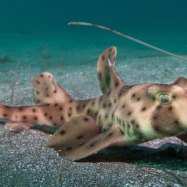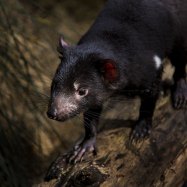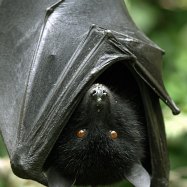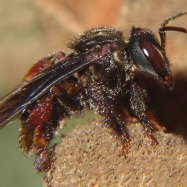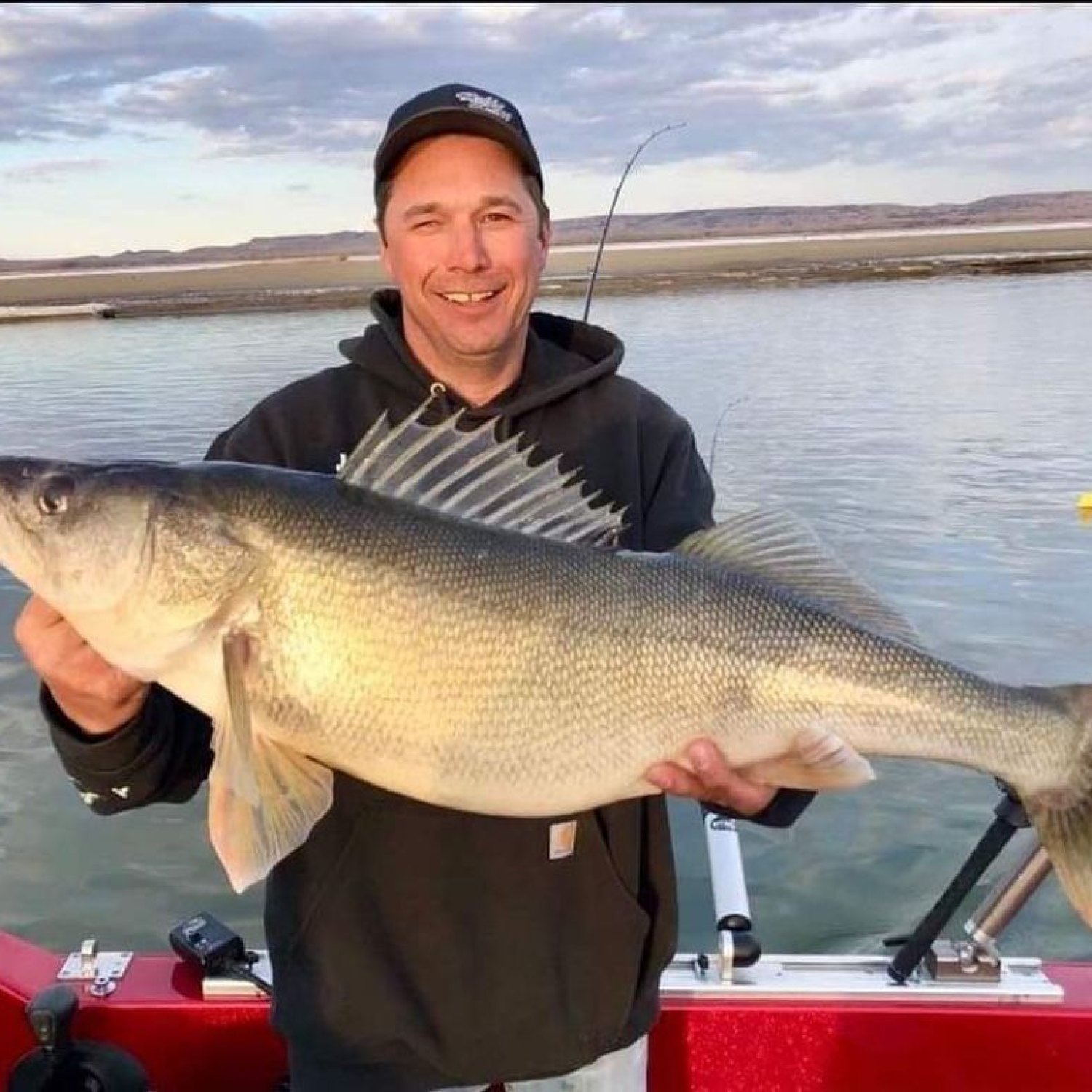
Walleye Fish
51 - 89 cm
Walleye fish are a popular game fish found in lakes and rivers throughout North America. With a slender and elongated body shape, they can grow up to 89 cm in length. They are a part of the Percidae family and are known for their delicious taste and challenging fight. For a fun day of fishing, head to your local lake or river and try your luck at catching a walleye!
Animal Details Summary:
Common Name: Walleye Fish
Kingdom: Animalia
Habitat: Freshwater
The Mighty Walleye Fish: A Feisty and Fascinating Freshwater Predator
The world's oceans may hold an impressive array of marine life, but the freshwater ecosystems of North America are home to a diverse and intriguing range of species as well. One such species, the Walleye fish (Sander vitreus), is a fascinating creature that thrives in the lakes and rivers of the United States and Canada.Often referred to as the "king of freshwater game fish," the Walleye is a popular game and food fish that has a rich history and a fierce fighting spirit. In this article, we will take an in-depth look at this remarkable fish, exploring its unique characteristics, habitat, behavior, and more Walleye Fish.
The Classification and Taxonomy of Walleye Fish
Before we dive into the world of the Walleye, let's first understand its classification and taxonomy. According to the Linnaean system of classification, the Walleye belongs to the kingdom Animalia, phylum Chordata, class Actinopterygii, order Perciformes, and family Percidae.The scientific name for the Walleye is Sander vitreus, and it is a member of the perch family (Percidae). Interestingly, this fish is also known by many other common names, including yellow pike, colored pike, walleyed pike, and pickerel, to name a few.
A Freshwater Predator: Habitat and Distribution
Walleye fish are native to the freshwater systems of North America, with the United States and Canada being their primary countries of origin. In the US, they can be found in most of the Great Lakes, as well as in water bodies in the northern and central regions of the country. In Canada, the fish can be found in lakes, rivers, and reservoirs in the provinces of Manitoba, Saskatchewan, Ontario, and Quebec.These fish prefer clear, cool, and deep waters, with a rocky or sandy bottom. They are typically found in both lakes and rivers, and their preferred habitats include shallow flats, weed beds, and rocky reefs Wandering Albatross. Walleyes are highly adaptable and can also inhabit brackish waters and enter estuaries.
Characteristics and Physical Appearance
The Walleye fish has a distinct appearance that makes it easily recognizable. Its body is slender and elongated, with a pointed head and a large mouth. The lower jaw of the fish extends slightly beyond its upper jaw, giving it a characteristic "walleye" appearance.These fish display a range of colors, but they are primarily olive-green to yellowish-brown on the back, with golden-yellow sides and a white or creamy-white belly. They have large, reflective eyes, which can sometimes appear to glow in low light, making them especially fascinating to observe.
Walleyes have two dorsal fins, one being spiny and the other soft-rayed. Their anal fin is also spiny, and they have a long, narrow caudal fin (tail). The overall body shape and fins of the Walleye allow for effortless navigation and swift movements, making it a skilled predator in the water.
Feeding Behavior: Carnivorous Appetite
Walleye fish are opportunistic feeders and are known for their aggressive and voracious appetites. They are carnivorous and feed on a diverse range of prey, including smaller fish, insects, crayfish, and snails.One of the unique characteristics of the Walleye's feeding behavior is its ability to detect prey in low light. Due to the reflective layer behind their eyes called the "tapetum lucidum," Walleyes can see well in low-light conditions, such as dawn or dusk. This gives them an advantage over their prey, making them skilled hunters at any time of day.
The Fascinating Life of a Walleye: Reproduction and Lifespan
Walleye fish have a relatively short lifespan compared to other freshwater species, living up to 20 years in the wild. They reach sexual maturity at 3-4 years old, and their spawning behavior is quite unique.During the spring, female Walleyes lay their eggs on rocks or gravel in shallow waters. The male walleye then fertilizes the eggs before the female covers them with fine sediment. This process helps protect the eggs from predators and allows for proper aeration for successful development.
Once hatched, Walleye fry will spend several weeks feeding on plankton before transitioning to larger prey, such as insects and small fish. They grow quickly and can reach sizes of up to 51-89 cm in length. The larger the fish, the more likely it is to be a female, as Walleyes exhibit sexual dimorphism, with females being larger than males.
Fishing and Conservation of Walleye Fish
As mentioned earlier, Walleyes are a highly sought-after game fish, drawing anglers from all over the world. Due to their popularity, they are also subject to heavy fishing pressure, leading to strict regulations and conservation efforts to maintain healthy populations.One of the conservation challenges facing Walleye populations is the decline of their habitats due to human activities. Pollution, habitat destruction, and overfishing all pose a threat to Walleye populations, leading to a decrease in their numbers in certain regions.
To protect this vital species, governments and conservation organizations have implemented measures such as catch-and-release fishing, regulated bag limits, and monitoring of water quality in Walleye habitats. These efforts have helped stabilize Walleye populations and ensure a sustainable future for this remarkable fish.
The Walleye as a Symbol and Inspiration
The Walleye fish has often been used as a symbol in popular culture, representing different attributes and values. In some Native American cultures, the Walleye is seen as a symbol of perseverance and resilience, as it is a persistent fish that can survive in difficult environments.In other cultures, the Walleye is revered as a symbol of wisdom, as its ability to see in low-light conditions is seen as a symbol of intelligence and adaptability. Due to its impressive size and fighting spirit, the Walleye is also seen as a symbol of strength and determination.
Furthermore, the Walleye has also served as a source of inspiration for artists and writers around the world. Its unique appearance, challenging behavior, and significant cultural significance have made it a subject of many works of art and literature.
Conclusion
In conclusion, the Walleye fish is much more than just a freshwater predator. It is a fascinating creature with a rich history, unique characteristics, and an essential role in the freshwater ecosystems of North America. From its distinctive physical appearance to its aggressive feeding behavior and cultural significance, the Walleye is a truly remarkable species that continues to captivate and inspire people worldwide.

Walleye Fish
Animal Details Walleye Fish - Scientific Name: Sander vitreus
- Category: Animals W
- Scientific Name: Sander vitreus
- Common Name: Walleye Fish
- Kingdom: Animalia
- Phylum: Chordata
- Class: Actinopterygii
- Order: Perciformes
- Family: Percidae
- Habitat: Freshwater
- Feeding Method: Carnivorous
- Geographical Distribution: North America
- Country of Origin: United States and Canada
- Location: Lakes and rivers
- Animal Coloration: Olive-green to yellowish-brown on the back, golden-yellow sides, and white or creamy-white belly
- Body Shape: Slender and elongated
- Length: 51 - 89 cm
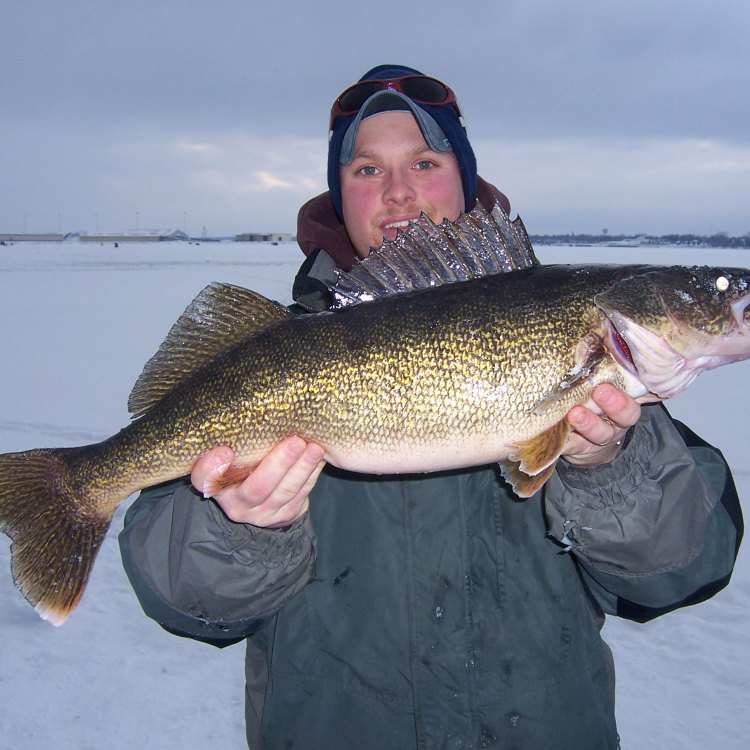
Walleye Fish
- Adult Size: Average size of 45 - 75 cm
- Average Lifespan: 7 - 10 years
- Reproduction: Sexual reproduction
- Reproductive Behavior: Spawning in shallow, rocky areas
- Sound or Call: No specific sound or call
- Migration Pattern: Migrate to spawn in spring
- Social Groups: Solitary
- Behavior: Nocturnal
- Threats: Overfishing, habitat loss, pollution
- Conservation Status: Least Concern
- Impact on Ecosystem: Keystone predator in some ecosystems
- Human Use: Commercial and recreational fishing
- Distinctive Features: Large, glassy eyes; sharp teeth; dark olive-colored patch on the dorsal fin
- Interesting Facts: They can see well in low-light conditions; they have a reflective layer behind the retina called the tapetum lucidum
- Predator: Bigger predatory fish, birds of prey
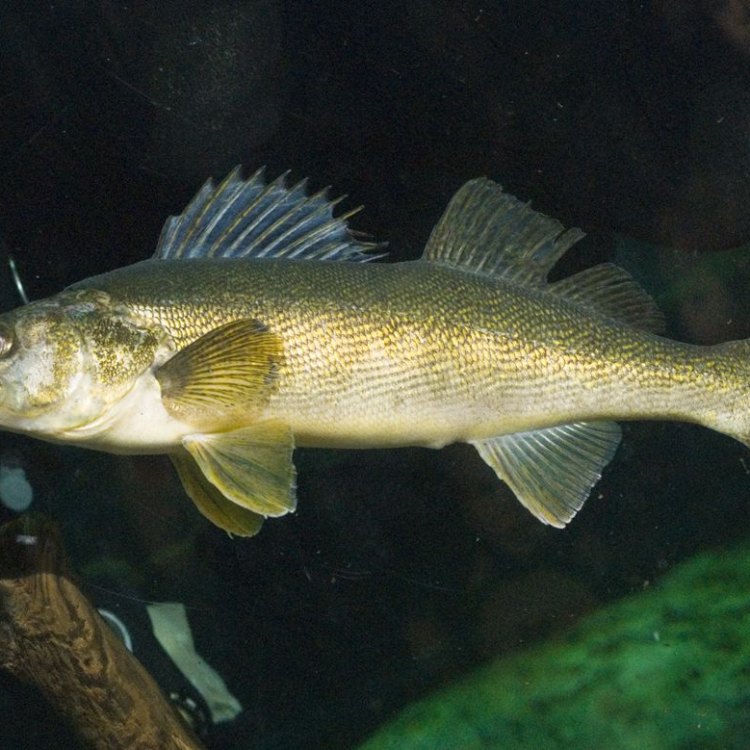
Sander vitreus
The Mighty and Mystifying Walleye Fish: A Unique Species with Impressive Features
The majestic and elusive walleye fish, known scientifically as Sander vitreus, is a fascinating creature with a rich history, distinctive features, and important role in the ecosystem. This elusive species is found in freshwater lakes and rivers across North America, making it a prized catch for both recreational and commercial fishermen. However, its unique set of features and behaviors make it much more than just a regulatory measure for those who indulge in the popular sport of fishing.Let's dive into the depths of this intriguing species and discover what makes it stand out from the rest PeaceOfAnimals.Com.
Overview of Walleye Fish
Walleye fish, also known as yellow pike or walleye pike, are a type of freshwater perciform fish that are highly sought after by anglers for their sporting abilities and delicious flesh. They are typically found in clear, shallow waters with rocky bottoms and are known for their large size and sharp teeth, making them a formidable predator in their habitat.On average, walleye fish can reach a length of 45 - 75 cm and can weigh up to 5-10 pounds, with the largest recorded specimen being over 42 inches long and weighing a whopping 25 pounds! They have a cylindrical, elongated body shape, with a dark olive-colored patch on their dorsal fin, and their sides and back are usually a pale yellowish or olive-green color.
Their Fascinating Reproductive Behavior
Sexual reproduction is the primary mode of reproduction for walleye fish, with spawning taking place in shallow, rocky areas during the spring. This behavior makes them easy targets for fishermen during the spawning season, leading to concerns about potential overfishing and its impact on their population.Interestingly, walleye fish do not have a specific sound or call, unlike some other fish species. They communicate through body language, such as changing their color or displaying their fins, to convey their intentions to other fish.
To Migrate or Not to Migrate?
Walleye fish have a unique migration pattern, where they migrate to their preferred shallow, rocky spawning grounds during the spring. This behavior is necessary for their reproduction, as it ensures that they have an optimal environment to lay their eggs and for the eggs to hatch successfully Wood Tick.However, unlike some other fish species, walleye fish do not migrate long distances for food or environmental reasons. They prefer to stay in their chosen habitat and have been found to be solitary, with no significant social groups or hierarchies.
The Nocturnal Hunters
Walleye fish are primarily nocturnal creatures, preferring to hunt and feed during the cover of darkness. This behavior is due to their unique set of eyes, which are highly adapted to low-light conditions. They have large, glassy eyes that allow them to detect even the slightest movements in the water, making them effective predators.Besides their large eyes, walleye fish also have a reflective layer of tissue behind their retina called the tapetum lucidum. This layer reflects light, giving their eyes a glowing appearance in the dark and allowing them to see better in low-light conditions.
Threats to the Walleye Fish Population
While walleye fish are not considered a threatened species, they do face several challenges that impact their population and overall health. The primary threat to their population is overfishing, as their desirable size and taste make them a popular target for recreational and commercial fishermen.Additionally, habitat loss and pollution also pose a threat to their population. As they rely on specific shallow, rocky areas for spawning, any significant changes or destruction of these areas can have a significant impact on their ability to reproduce.
The Keystone Predator Role in the Ecosystem
Walleye fish may be the apex predator in their habitat, but they also play a crucial role as a keystone species in some ecosystems. They are voracious predators, feeding on a variety of small fish, crustaceans, and insects, thus controlling their population and maintaining a balance in the food chain.The presence of walleye fish also has a positive impact on the water quality of their habitat. As they feed on smaller fish, they help keep their population in check, preventing them from overgrazing on aquatic plants and algae, leading to cleaner and healthier water bodies.
The Human-Animal Connection
The walleye fish has been an essential species for humans for centuries, providing a significant source of food and recreation. In the past, they were a staple food source for Native American tribes and were highly valued for their nutritional benefits and versatility in cooking.Today, walleye fish is still highly prized for its delicious flesh and is a popular catch for recreational anglers, especially in the Great Lakes region of North America. However, conservation efforts have been put in place to ensure their population remains healthy for future generations to enjoy.
The Distinctive Features of Walleye Fish
Apart from their large eyes and sharp teeth, walleye fish have some other distinctive features that make them stand out from other fish species. For starters, their name, "walleye," comes from the reflective layer behind their retina, which gives their eyes a glassy, opaque appearance.Furthermore, their dark olive-colored patch on their dorsal fin is unique to this species, and some anglers use its dark color to identify them in the water. They also have a narrow, pointed head that makes them aerodynamic and swift swimmers, adding to their impressive predator abilities.
Predators of the Mighty Walleye Fish
While walleye fish are powerful predators themselves, they have their share of predators to look out for in their habitat. Larger predatory fish, such as northern pike and muskellunge, are known to feed on smaller walleye fish. However, their main predators are usually birds of prey, such as eagles and ospreys, which swoop down to the water's surface to snatch unsuspecting walleye.The Bottom Line
In conclusion, the walleye fish is a unique species that has captured the intrigue and fascination of humans for centuries. Their distinctive features, fascinating behaviors, and important role in the ecosystem make them an essential species to protect and conserve.As we continue to learn more about these impressive fish, it is essential to balance our use and enjoyment of them with efforts to ensure their continued existence in the wild. With the right conservation measures in place, we can continue to appreciate and admire the mighty and mystifying walleye fish for generations to come.

The Mighty Walleye Fish: A Feisty and Fascinating Freshwater Predator
Disclaimer: The content provided is for informational purposes only. We cannot guarantee the accuracy of the information on this page 100%. All information provided here may change without prior notice.




